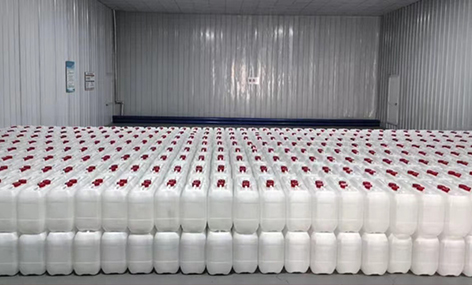
Dec . 03, 2024 15:49 Back to list
acetic acid and glacial acetic acid difference
The Difference Between Acetic Acid and Glacial Acetic Acid
Acetic acid is a colorless liquid organic compound with the chemical formula CH₃COOH. It possesses a pungent smell and a sour taste, characteristic of vinegar, which contains about 4-8% acetic acid by volume. The substance is widely used in various applications, from food preservation to industrial processes. However, within the context of acetic acid, one term often encountered is glacial acetic acid. Understanding the difference between these two forms is essential for proper use in both scientific and commercial settings.
What is Acetic Acid?
Acetic acid, in general terms, refers to the aqueous solution of acetic acid where the concentration can range from low to high levels. For instance, in culinary applications, vinegar is essentially a diluted form of acetic acid, usually containing 4-8% acetic acid by volume. In industrial settings, it can be used in various concentrations, depending on the requirements of the process. The compound is known for its essential role as a precursor to various chemicals, including acetic anhydride and acetate, which are used in the production of plastics, synthetic fibers, and even in the food industry as a preservative.
What is Glacial Acetic Acid?
Glacial acetic acid, on the other hand, refers to pure acetic acid that is in a concentrated, undiluted form. It is called glacial because, at temperatures below 16.6°C (62°F), it crystallizes to form ice-like solids. This form of acetic acid is typically about 99-100% pure and is often referred to as acetic acid in its concentrated state. It is highly corrosive and can cause severe burns upon contact with skin. Glacial acetic acid is primarily used in laboratories and in the manufacture of various chemical products.
Key Differences
acetic acid and glacial acetic acid difference

1. Concentration The most significant difference between acetic acid and glacial acetic acid lies in their concentration. While acetic acid can range from very low concentrations (as in vinegar) to moderately high concentrations (up to around 80%), glacial acetic acid is nearly pure.
2. Physical State At room temperature, acetic acid exists as a liquid. However, when temperatures drop below 16.6°C, glacial acetic acid solidifies into crystalline form, which is not observed with weaker concentrations.
3. Safety and Handling Due to its high concentration, glacial acetic acid is more hazardous than diluted forms. Proper safety precautions, such as wearing gloves, goggles, and protective clothing, are essential when handling glacial acetic acid to avoid serious injury.
4. Applications Acetic acid in its diluted form is commonly used in food products, as a preservative and flavoring agent, while glacial acetic acid is mainly utilized in industrial and laboratory settings for synthesizing chemicals and in various chemical reactions.
5. Reactivity Glacial acetic acid is more reactive than its diluted counterpart. It can readily participate in chemical reactions that require a strong acidic environment, thus serving as an important reagent in organic synthesis.
Conclusion
In summary, while acetic acid and glacial acetic acid share the same chemical identity, their differences in concentration, physical state, safety considerations, applications, and reactivity are significant. Understanding these differences is crucial for anyone involved in chemistry, whether in a laboratory, industrial, or culinary setting. Inappropriate usage of glacial acetic acid, given its corrosive nature, can lead to severe health risks, whereas dilute acetic acid is relatively safe when used properly. Therefore, it is vital to choose the right form of acetic acid based on the specific needs of your task.
-
SmartAgri Solutions - Precision Farming&Soil Monitoring
NewsJul.13,2025
-
Industrial Solutions-Example Inc.|Smart Manufacturing&Energy Efficiency
NewsJul.13,2025
-
Food Grade Glacial Acetic Acid-Pure Quality|High-Purity Acetic Acid,Food-Grade Chemical
NewsJul.13,2025
-
Industrial Efficiency Solutions-NextGen Technologies|Advanced Automation&Data-Driven Analytics
NewsJul.12,2025
-
Smart Manufacturing Solutions-Example.com|Enhance Efficiency&Reduce Costs
NewsJul.12,2025
-
Food grade glacial acetic acid
NewsMar.07,2025
